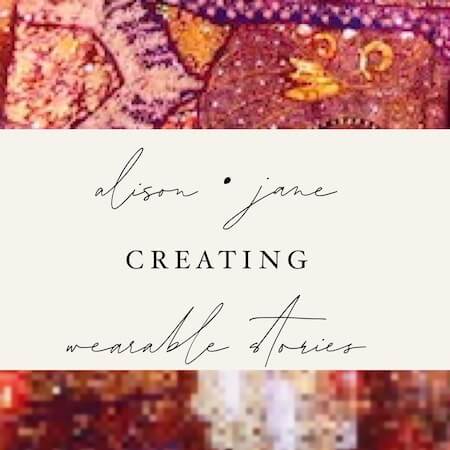The Fabulous Handwoven Indian Ikats
In the small village of Ponchampally outside of modern, bustling Hyderabad, India, lives a weaving community working hard to keep the fabulous handwoven Indian ikats alive. Using age old techniques for the natural dying and weaving of these intricate Indian ikats, their struggles to make a sustainable business viable are real. For someone such as myself who spent over 20 years in the fabric design business it was a visual feast and authentic honor to meet this group of artisans.

It might help to explain what ikat (ee-khat) actually is. The framed pieces below from several Pottery Barn designs show examples of the types of finished patterns you can achieve. Ikats are thought to have originated in Asia, but examples during the same time period have also been discovered in South America. Creatives working simultaneously across the globe? Why not! These fine fabrics have a long history in India, especially among the royals.
Initially the yarn from organic cottons and silks is spun and wound into spools that are either dyed or used in their natural form in the woven textiles.
The beautiful fabrics are patterned before they ever are threaded onto the loom. Handwoven Indian ikat can refer to both the thread and/or the finished textile. All of the intricate decoration is made before the fabric is woven by wrapping and dying the WARP, WEFT or both beforehand.
Similar in concept to both batik and tie dye all three are resist dying techniques. Indian ikat is light years ahead in terms of technique complexity. The more binding that is done before weaving, the more complicated the pattern.
Dying Indian Ikats
The artisans of Ponchampally further employ the labor intensive practice of using only natural dyes prior to weaving their Indian ikats. A wide variety of plant and flower ingredients achieve subtle hues. Recipes allow artisans to achieve all colors of the rainbow. Marigolds, pomegranate and indigo are just a few of the types of seeds, bark, pods and full plants used in different combinations for the process.
The potions are boiled to bring out the true colors. The dyes are set using either allum or sodium bicarbonate. Marigolds are responsible for the golden yellow above and below.
Wrapping Indian Ikats

The artisan wraps areas that will remain yellow in the pattern.
The Indian ikat threads are wrapped and bound to resist the dye. This is the critical “ikat” technique to make the pattern. Above, rubber bands, tape or other dye resistant materials are wrapped around the area he wants to preserve yellow when it goes into the next dye bath. This process is continued until all the colors and wrapping are complete. All digits come in extremely handy.
The multipart technique becomes more complex by successive overwrapping and overdying making the pattern possibilities infinite.

Side by side images of a dyed warp being prepared for threading on the loom.
Weaving Indian Ikats
The dyed yarn is then woven into fabric, usually for a pre existing clients order. Production is slow and meticulous.

This is one of the finished warps being loaded onto loom. Isn’t the pattern achieved amazing? I would have loved to see the finished product.
As always, we are cheerfully greeted by the village children who are curious about two blonde women in their village. Anxious to practice English and have their photo taken, the joy all around is immediate and long lasting.

Insider Tip: When purchasing an Indian ikat:
- If you burn the fibers of 100% silk or cotton the fabric will turn to ash. A synthetic fabric tends to ball up and look like its melting and smell like hair burning. Acrid!
- True Indian ikats (or ikats from other areas) will have the pattern just as bright on both the front and back. If the design is lighter on the reverse, the fabric was surface printed. Obviously the price will be higher for a true Indian ikat, but after reading about the complicated process, you know it’s money well spent to support local artists trying to keep their craft sustainable.
After I observed some of the primitive techniques used to produce these gorgeous textiles, my appreciation grew tenfold. Spinners used an up cycled bicycle wheel to spin the threads into yarn.
The cooperative is partnering with companies around the world who are committed to offering fair pay to Indian artisans who use eco friendly techniques to produce their fabrics. Centuries old techniques are combined with modern sales and renewed interest from the public to safeguard the future of these traditions. The SLOW FASHION movement is helping to promote these and additional artisans.
The hand-crafted nature of the process insures that even when a pattern is repeated, all yardage is unique and individual. Really one-of-a-kind. Slight variations add to the charm of the fabric. The finished product is a labor of love, sure to be treasured for generations to come.
Pin Me ♥ Show Some Love for Indian Ikats
Wait: There’s more from India
- In Rajasthan, you won’t want to miss these adventures.
- The Taj Mumbai is a wonderful place to stay.
- Make sure to visit Elephanta Island when in Mumbai and discover the Glory of Shiva
- Vegetarian love for the food in India
- A Sustainable Retreat on the beach for lovers and anyone else in Kerala
♥













































I saw a similar technique for dyeing used during our recent trip to Ecuador. The yarn there is then woven into shawls. The work done in India on these Ikats is humbling.
Humbling is a good word to use Suzanne. To see the beauty that came from this village when they have so little in comparison was just remarkable. Without all the external stimuli, creativity reigns free.
Thx for this fascinating post about the artisan village of Ponchampally. Learning how these handwoven Indian mats are made really engrains a visitor’s experience to the region.
Normally you are just driving past all these villages. To have the door open and be able to see the magic created behind changes everything. A whole different world when you get the chance to scratch beneath the surface.
What a complex and time-consuming process but with exceptional results. I’ve not heard of ikats before. Aren’t they beautiful!
What a great story about the hows of Indian Ikat making! I used to dye fleeced with natural vegetable dyes I made myself, so this part of the story really resonated with me.
What a splendid story you weave. I loved how the pictures really supported everything you said. I especially liked having two solid tests I could use for authenticity – burning and looking for color on the front and back. I wonder how the shop owners would feel about me pulling out a lighter and putting it onto their wares?
It is beautiful. They really get into it using their feet and all. This is a very nice community that you shed some light on. I have never heard of this place.
I have ikat sheets in my home, but I never knew the technique of how these fabrics are made. Such an immersive experience for you to be able to see first-hand, and some great photos from the community in your post.
Handwoven Indian ikat is a fascinating work and thanks for taking us through the process. There are a lot of interesting crafts and culture in India that I had yet to explore.
I do hope to see more pictures of the finishing products and It would be fun that I could actually take a class in India and get my hands “dirty” as well! @ knycx.journeying
I’d love to have better access to these textiles, I believe people would be throwing themselves at supporting these authentic endeavors. Thanks for bringing this to us, Alison!
So beautiful! And so interesting to learn how they create all those gorgeous colours! Loved all your beautiful snapshots 🙂
It’s amazing how they get such rich and varied colours from natural materials – and the patterns are so beautifully intricate, it’s a real skill.
I’ve never seen this before, this technique sounds so interesting! The finished products must look lovely!
I had no idea that cloths were dyed with things such as pomegranate. Loved learning about the weaving community of Ponchampally and I hope to visit one day.
The craftsmanship of these ikats is exquisite. I am all in favour of using natural dyes and think the ikats are worth a high price. It is unfortunate that this lifestyle may not be sustained due to the younger generation being able to find more lucrative jobs elsewhere.
This was an entirely new subject for me. I am very impressed with the intricate nature of and the patience involved with creating ikats. The designs you displayed are beautiful. I sure hope these artisans are making enough money to continue the ancient practice! The fact that you are taking the time to educate people about the process and the quality of these ikats, will help a lot!
India fascinates me and I would love to visit. I love the food, the clothes, and would like to learn more about the culture
What an incredible experience, especially as you have a personal interest having worked in fabric design yourself. Must have been so interesting to have been able to see the actual process, from the looms to the dying – it’s cool to know that Ikats are made using only natural dyes. The patterns they achieve truly are amazing!
Truly fabulous. I loved learning about these fabrics that I’ve always loved. Interesting about how to know if it’s natural or synthetci, dyed through or printed. Would love to have your experience of seeing the weaving in action. Wonderful, unique post.
I’m so glad you enjoyed it Elaine. It’s always hard for me to decide how deep I can go before a reader’s eyes glaze over. One of my favorite experiences in India is visiting the weaving villages and seeing traditional crafts. Spreading the word is my little way of trying to help them stay sustainable. (plus I do indulge in a fabric or two!)